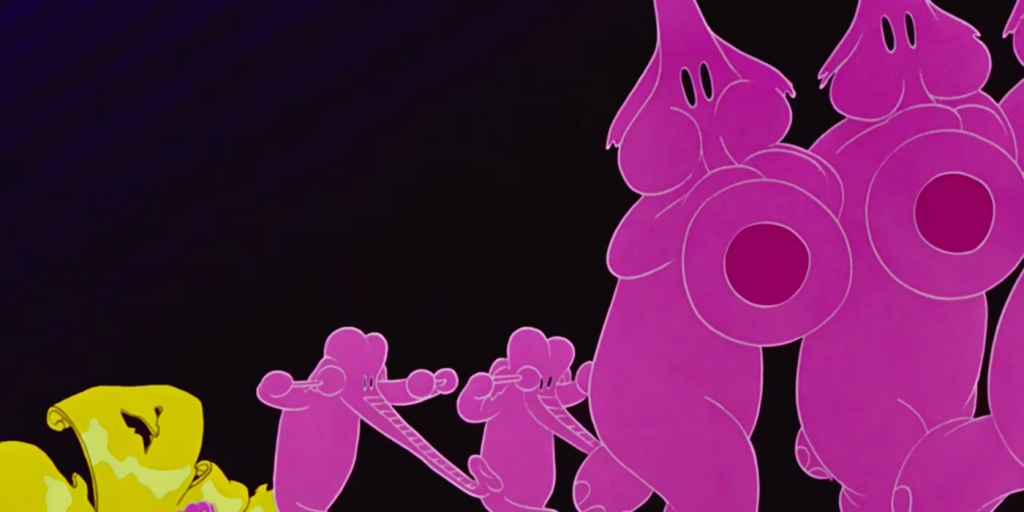
- Dumbo’s Pink Elephants – In the 1941 film “Dumbo,” there is a scene where Dumbo and Timothy Mouse accidentally get drunk and experience a psychedelic dream involving pink elephants. The sequence features trippy visuals and surreal imagery that stunned audiences, especially considering this was a children’s movie.
- Snow White’s Creepy Forest Scene – In Disney’s first animated feature, “Snow White and the Seven Dwarfs” (1937), Snow White runs into a dark and eerie forest filled with spooky creatures and haunting imagery. The sequence is notably unsettling and quite intense for a film aimed at children.
- Pinocchio’s Pleasure Island – In “Pinocchio” (1940), the titular character finds himself on Pleasure Island, a seemingly idyllic amusement park. However, it quickly becomes apparent that the park is a trap, turning misbehaving boys into donkeys. The transformation scene is both bizarre and horrifying, leaving a lasting impression on viewers.
- The Headless Horseman in “The Adventures of Ichabod and Mr. Toad” – The segment “The Legend of Sleepy Hollow” in this 1949 film features the Headless Horseman chasing Ichabod Crane. The eerie atmosphere, coupled with the haunting design of the Headless Horseman, created a spooky experience that stands out in the Disney canon.
- Fantasia’s Night on Bald Mountain – “Fantasia” (1940) is known for its experimental and avant-garde approach to animation, and “Night on Bald Mountain” is a standout segment. The sequence features demonic imagery, including the intimidating demon Chernabog, which can be quite intense for younger viewers.
- The Siamese Cats in “Lady and the Tramp” – The portrayal of Siamese cats in “Lady and the Tramp” (1955) has been criticized for perpetuating negative stereotypes. The cats, named Si and Am, are portrayed as cunning and deceitful, with exaggerated facial features and a mischievous demeanor that has raised concerns about cultural insensitivity.
- Alice’s Adventures in Wonderland’s Mad Tea Party – The 1951 adaptation of “Alice’s Adventures in Wonderland” features a memorable scene where Alice encounters the Mad Hatter, the March Hare, and the Dormouse having an eccentric tea party. The surreal and nonsensical dialogue combined with the unpredictable behavior of the characters contributes to the overall strange atmosphere of the scene.
- “The Black Cauldron’s” Dark Themes – Released in 1985, “The Black Cauldron” is one of Disney’s darkest and most mature films. It includes intense scenes of peril, dark magic, and frightening creatures, making it stand out as a departure from the typically lighter tone of Disney animated features.
- “The Rescuers” Controversial Image – In the original 1977 version of “The Rescuers,” there was a brief controversial image of a topless woman visible in the background. This subliminal image led to a recall of the home video release and subsequent edits to remove the image from later versions.
- “Peter Pan’s” Stereotypical Depiction of Native Americans – The 1953 film “Peter Pan” has faced criticism for its stereotypical portrayal of Native Americans, including their speech patterns, mannerisms, and physical appearance. The characters are depicted with exaggerated features and behavior that perpetuate negative stereotypes and racial caricatures.

We bring out some of the most well-known Disney collection, all of which are available at reasonable costs. Visit our link now if you are interested in the Disney collection


Mickey Mouse, Minnie Mouse, Donald Duck, Goofy, Pluto,
